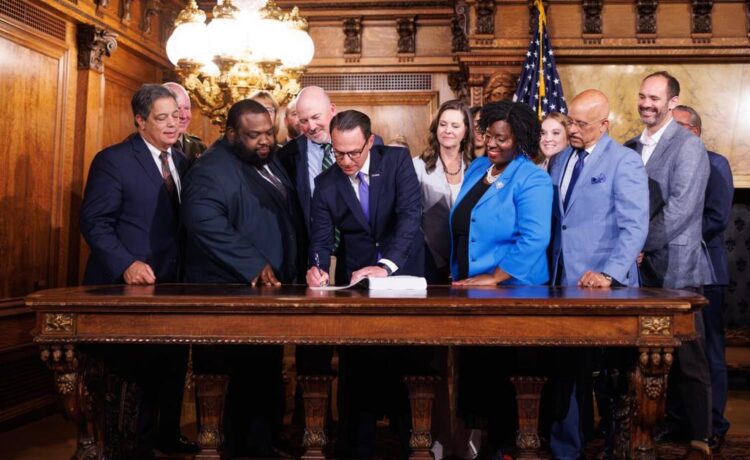HARRISBURG — Pennsylvania lawmakers finalized the new state budget last week, allocating billions of taxpayer dollars for operations in 2024-25, but related code bills will detail exactly how that money is put into action.
A look at the new school code shows formula shifts altering how state subsidies are shared with private schools, accountability directives for charter and cyber charter schools and specific spending on a variety of initiatives from cell phone lock pouches to school security guards to feminine hygiene products.
Primarily, the school code modifies Pennsylvania’s Fair Funding Formula to incorporate three-year averages of Census data rather than data collected and reported by individual school districts.
It calculates how schools share portions of basic education subsidies — the budget boosted subsidies by $225 million for all public schools — along with a combined $526 million in new money intended to backfill gaps in per-student spending by the state and property tax relief for overburdened districts. The code also prorates an additional $60 million in hold harmless subsidies to ensure schools don’t receive less funding than last year.
Calculations for charter school payments by brick-and-mortar school districts were adjusted to incorporate a true count of special education students rather than a presumed estimate. The change is estimated to save districts $69 million annually in a full school year though in 2024-25, it will result in half-year savings as the adjustment begins Jan. 1.
Ethics standards and reforms are incorporated in the school code, amending Pennsylvania’s Charter School Law to require that trustees file statements of financial interest and take an oath of office. They must also reside in the commonwealth, can’t earn funds from another charter entity and can’t be a voting member of their school’s board.
Meanwhile, charter schools are now required to undergo a certified audit annually.
There is $100 million allocated for reimbursements to public school districts for payments made to charter and cyber charter schools. It’s the first appropriation of its kind since 2010-11 and the formula to disburse the funds is adjusted to prorate reimbursement based on a school district’s share of the total cyber charter tuition costs. The code adjusts the funding formula, too, for career and technical schools concerning student population that will boost subsidies to nearly $118 million, a 12% increase. Intermediate units will now share in about 5.5% of state special education funding, or about $82 million in the upcoming school year. The change will remain in place for future school years.
While the budget and accompanying code don’t include school vouchers, something Republicans will continue to press for, the do include an additional $75 million for two tax credit programs supporting private school scholarships and tuition assistance, raising the combined limit for both to $630 million.
The budget includes $100 million in grant funding for school safety and mental health resources. The code directs that each public school district will receive at least $100,000 while intermediate units, career and technical schools, charter and cyber charter schools will receive $70,000.
Aside from costs to pay and train school security, the eligible uses laid out in the code include a new initiative that would limit student access to cell phones during the school day. Schools that adopt a policy prohibiting cell phone use could apply for funds to purchase lockable bags to store phones.
The code requires all public schools to hire at least one security staffer and they can be armed, though waivers can be sought. Non-public schools can share in an additional $20.7 million set aside for targeted school safety grants to hire security personnel.
The Student Teacher Support Grant Program, renamed from the Educator Pipeline program, was doubled to $20 million. The stipends range from $10,000 to $15,000 to support student teachers, a lengthy unpaid assignment toward becoming a full-time teacher. Eligibility was expanded to include pre-kindergarten classrooms. The program proved wildly popular this year, its first, but the total falls short of the $45 million sought by advocates to serve anticipated demand.
Up to $3 million can be used by the Department of Health to award grant funding to schools toward the purchase and distribution of feminine hygiene products.
















